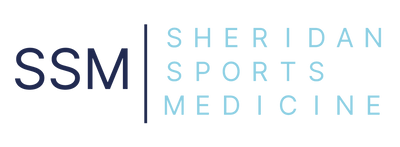ACJ pain can be a source of significant discomfort and limit shoulder movement for many individuals. Traumatic injuries often occur in the sporty active population following falls or collisions with common sports including rugby, football, hockey and cycling. Pain localising to the ACJ can also occur without recent or indeed any history of trauma. Whether it stems from an acute injury or develops gradually over time, understanding the causes, symptoms, and treatment options is essential for managing this condition effectively.
Problems related to the ACJ can occur in individuals of all ages, but certain demographics and activities are more commonly associated with these injuries. Acute ACJ injuries occur most frequently in younger individuals, particularly adolescents and young adults involved in sports or activities that involve direct trauma to the shoulder region. A typical mechanism of injury involves a fall onto an outstretched arm or a direct blow to the top of shoulder, such as those seen in contact sports like football, rugby, or hockey. Additionally, activities that require repetitive overhead motions, such as weightlifting, swimming, or volleyball, can also increase the risk of acute as well as overuse ACJ injuries.
These injuries are more prevalent in younger individuals, usually between the ages of 15 and 40, due to their higher participation in sports and physical activities. However, it's important to note that ACJ pain can also develop gradually over time, often in older adults, as a result of degenerative changes or chronic inflammation in the joint. This type of ACJ pain is more commonly seen in individuals over the age of 40, with symptoms typically manifesting as an ache or discomfort, although it can become quite severe and debilitating.
The ACJ is located at the top of the shoulder where the collarbone (clavicle) meets the acromion (part of the shoulder blade). Being a relatively superficial joint (close to the skin surface) makes it more susceptible to injury, with pain generally well localised to the joint. With or without injury, patients who have a problematic ACJ will tend to complain of tenderness, visible swelling, and discomfort or pain over the top of the shoulder. This is aggravated particularly with overhead movements or when reaching across the body. In some cases, pain may radiate down the arm or cause difficulty with certain activities. Patients may also report a sense of clicking or instability in the joint, which can persist long after the initial injury and pain has settled.
When evaluating AC joint pain, doctors and physiotherapists typically begin with a thorough medical history and physical examination. This will involve assessing the range of motion, stability, and tenderness of the shoulder joint. Depending on the suspected cause and severity of symptoms, imaging studies such as X-rays, ultrasound, or magnetic resonance imaging (MRI) may be ordered.
X-rays are important for assessing the alignment of the ACJ and for identifying any associated fractures. Ultrasound and MRI provide more detailed images of soft tissues and ligaments, aiding in the diagnosis and grading of injuries using systems like the Rockwood grading system, which categorises ACJ separations based on severity.
Benifits of Ultrasound:
Ultrasound imaging offers several advantages in diagnosing and indeed treating ACJ particularly when performed by experienced clinicians. It provides real-time visualisation of the joint and surrounding structures. Dynamic assessment of joint stability can also be performed. It also ensures accurate guidance for treatments such as injections. Moreover, ultrasound can often be offered in the same clinic appointment, improving convenience and patient comfort.
Treatment for AC joint pain depends on the underlying cause and severity of symptoms. In cases of acute injury, initial management may include rest, ice, and immobilisation with a sling to allow for healing. Conservative (non-surgical) management is generally considered appropriate for lower grade injuries - typically injuries graded as 1-3 on the Rockwood grading system. A surgical opinion is generally advised for grade 4-6 injuries.
Pain management options may include over-the-counter medications or injections such as a corticosteroid, if pain is persisting beyond the acute period. These are best performed under ultrasound guidance for improved accuracy and patient comfort.
For chronic AC joint pain associated with degenerative changes, conservative treatments such as physical therapy, anti-inflammatory medications, and targeted exercises may be beneficial. Similarly, injections may also be discussed as part of a wider program of treatment.
In cases where conservative measures fail to provide relief, surgical intervention may be considered. Surgical options for traumatic AC joint injuries may include stabilisation procedures or ligament reconstruction, while chronic AC joint pain may be treated with procedures such as distal clavicle excision.
ACJ pain can significantly impact shoulder function and quality of life, whether stemming from acute injury or chronic degenerative changes. By seeking timely medical evaluation, undergoing appropriate diagnostic tests, and exploring a range of treatment options, most individuals can effectively manage AC joint pain and return to their daily activities with minimal discomfort.


